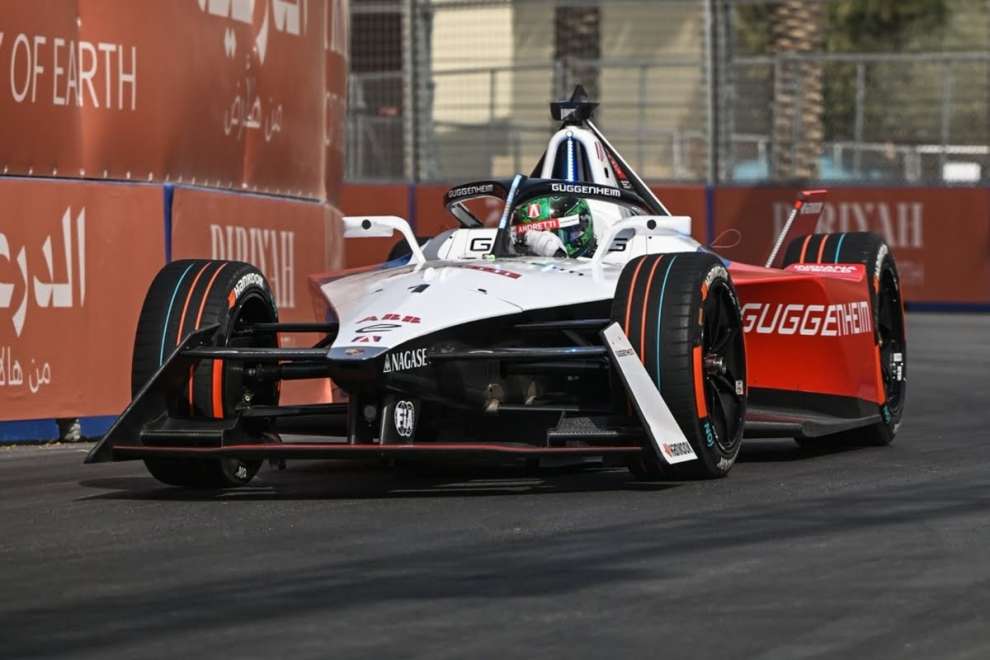By Carlo Platella
Drivers' vision of the race turns out to be an increasingly rewarding quality in Formula E. The first Diriyah E-Prix is an excellent example of this, when Jake Dennis questioned the instructions received via radio from the team, implementing a alternative strategy was worth the victory. This is not a sporadic episode, but the testimony of a category that rewards the resourcefulness of the drivers, also thanks to a regulation in which the real-time transmission of telemetry to the garage is prohibited.
Dennis' victory
In Friday's race the world champion started from third on the grid, finding himself behind Jean-Eric Vergne and Mitch Evans. When after a few laps the leading duo activated the first Attack Mode, the Andretti pitman instructed his driver to do the same, but Dennis thought differently. The reigning champion says: “I was communicating a lot with the team, but I don't think he fully understood the potential that I heard in the car. When they told me to activate the first Attack Mode, she would be very tight with Evans.”
“I didn't see any particular risks in doing another lap to try to gain another five or six tenths on Mitch and that's exactly what I did,” Dennis continues. “Thanks to this call I gained second position, which then became first when Vergne activated his second Attack Mode, allowing me to build another lead. If Evans had stayed ahead of us, this wouldn't have been possible.” On both occasions the Andretti standard-bearer managed to open up a significant margin even with his opponents in Attack Mode, a dynamic emblematic of the difficulty in exploiting the 50 kW of extra power with the current tyres.
However, the world champion reveals another aspect that worked in his favor: “Off the ideal trajectory the track is very dusty. For this reason, when you activate Attack Mode you lose a half second for the change of trajectory, but in the next two corners you lose another four tenths due to the dirt collected by the tires, which is why the total loss is more than two seconds. When you try the overcut, you lose that second and a half for the Attack Mode to be activated, but even though you lose another four tenths in the subsequent corners, the other car is now behind you”. The particular conditions encountered in Diriyah are not common to all tracks, something that was cleverly considered in choosing the winning strategy: “Normally the activation zone is not so dusty and you don't lose more than a second and a half, but this year the situation was different. It's something we took into consideration”.
Strategist pilots
What happened in Diriyah is not an isolated case. On the contrary, according to Dennis the racing dynamics of Formula E encourage teams to delegate greater decision-making power to their drivers: “I knew what I was doing. It's something Andretti gives me free rein on. Towards the end of last season we understood that, given how the races develop, it is very important that the pilot reads them, something Cassidy does very well and I think so do I, as does Evans. This is what made the difference for the three of us last year, especially in high energy management races, like Portland.”
An element that plays in favor of the strategic freedom granted to pilots is the absence of real-time telemetry between the car and the wall, prohibited by the regulations. The driver has all the operating parameters of the car on the steering wheel, such as the temperature of the tires and brakes, as well as the energy level of the battery, but is obviously unable to communicate them in real time to the team. While in Formula 1 and other disciplines it is the team that has much more information available than the driver, in Formula E the opposite happens, also giving greater importance to the sensations transmitted by the car to the steering wheel. The pit wall maintains an important consultancy and guidance role, while that of the driver is changing from a mere executor to a strategist in turn, not only in the activation of the Attack Modes, but above all in energy management.

A victory for the relaunch
The winning move placed by Jake Dennis resulted in a victory that was a boost of confidence for the Andretti team after the difficulties suffered in Mexico City. The Briton went into detail about what happened in the inaugural stage: “We understood why we were slow in Mexico. It was due to something we had tried on the software side that didn't work and which was different compared to the other Porsches, which instead had a good weekend. Obviously then in Diriyah we won on Friday, so we didn't repeat the same mistake.”
However, the scenario of Saturday's race was completely different, in which the world champion finished out of the points. Dennis, however, shows calm and clarity, looking with optimism to a championship of which there are still 13 races to go: “I'm 28 years old, I'm no longer an eighteen year old and I'm the reigning champion. I no longer think that it is the individual races that matter, but I have a different approach and focus on the bigger picture. There are some positive elements to take from Saturday's race, where we recovered some positions and set the fastest lap by over half a second. Even if we didn't take any points, there is still some good to be gained.”
#Formula #telemetry #strategist #driver

